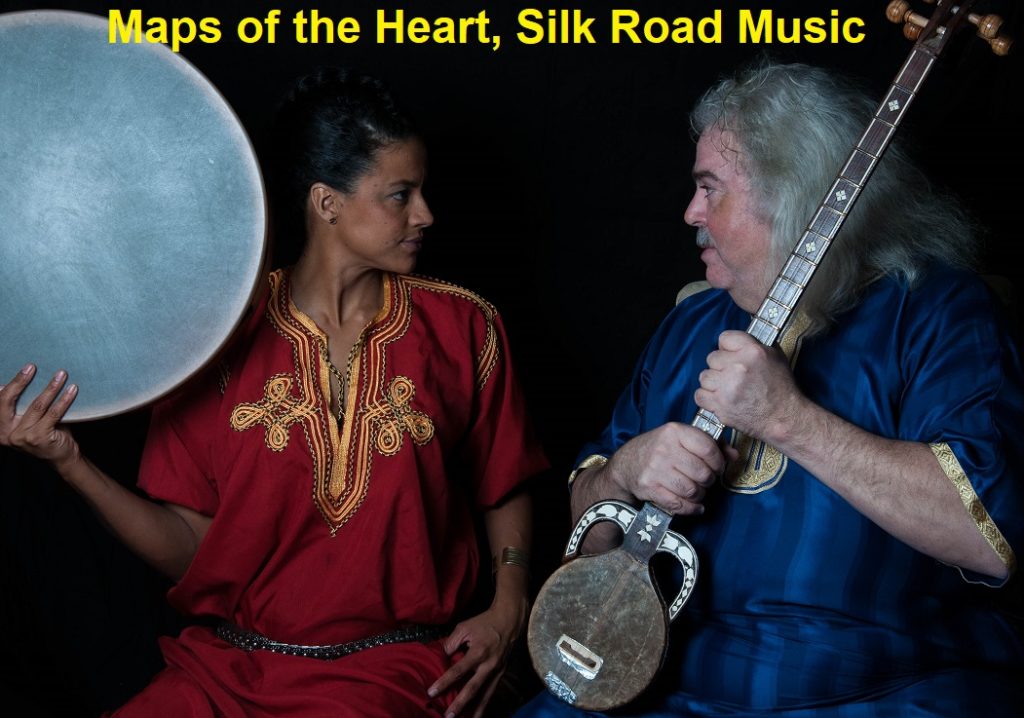Pathways Of Silk, Maps Of The Heart, Silk Road Music
Civilization and culture were the byproducts of great cities, such as those which existed along the fabled Silk Road which once connected three continents during what historians refer to as the ‘Era of Late Antiquity’. The 3rd to the 8th century AD was a time when much of Central Asia, the heartland of the road, was under the control and rule of the Sasanian kings of Persia who commanded a great empire they called Iranshahr. Merchants seeking goods and trade, scholars seeking learning and mystics treading upon on the spiritual quest all rubbed elbows in the great cities that sprang up along the road’s winding way across Asia, cities whose magical sounding names are fables and legends for us today- Merv, Bamiyan, Isfahan, Herat, Kushan, Samarkand, Turfan and many others. Goods and spices as well as that most famous commodity of all, silk, inspired merchants from all across the old world to trade, and in so doing they exchanged knowledge and ideas that traveled both east and west. When business and trading was finished for the day the local inhabitants and the thousands of visitors to any of these great metropolises might relax at a favorite inn at night or crowd the town square and listen to the epic stories of the ashik bards and storytellers, while some might prefer to pursue the life of the spirit or the mind, taking advantage of the many universities, temples and places of worship representing a plethora of religious traditions found in Central Asia at the time. Any of these fabled cities in this era were meeting places for humanity to establish contact and create a sense of cooperation with one another.

The music in our recording is inspired by the folk music from such cultures as the Kashmiri, Afghani and Persian musical traditions. The lute you hear is a Kashgar Rewap from eastern Turkestan, popular among the Uygurs of western China, a plucked instrument similar to the Iranian Tar. Much of the improvisational style of playing here is similar to Iranian Tar performance as Persian music was highly influential in the musical traditions of Central Asia as well as the Middle East.
The bendir is a large frame drum while the zarb is a wooden Persian goblet shaped drum, the playing technique utilizing much intricate finger work. With all due respect to the musical masters of these various traditions, our performance is not meant to be authentic but rather an expression of our love and dedication to the culture and tradition of this ancient place.
Ismail Butera: Recitation, Kashgar Rewap (read more about Ismail here)
Natalia Perlaza: Bendir, Zarb, Percussion, Guitar
